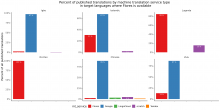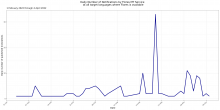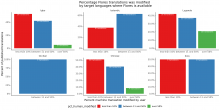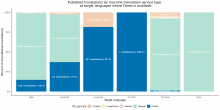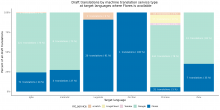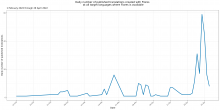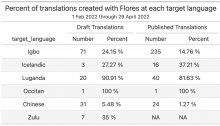Once Flores is deployed (T298584) we want to get data about its usage and impact on translations (in terms of quantity and quality).
Some aspects we may want to measure:
- How often Flores used in the different languages where it is available (maybe compared with other services available on those languages).
- How many translations are published using Flores (also as percentage of the total for the language).
- Which is the deletion rate for the articles created using Flores.
- How much is the initial translation modified by users when using Flores.
The above is just an initial proposal, we can adjust the exact measurements based on technical feasibility or considering better alternatives.
Data source: cx_corpora table and cx_translations table
